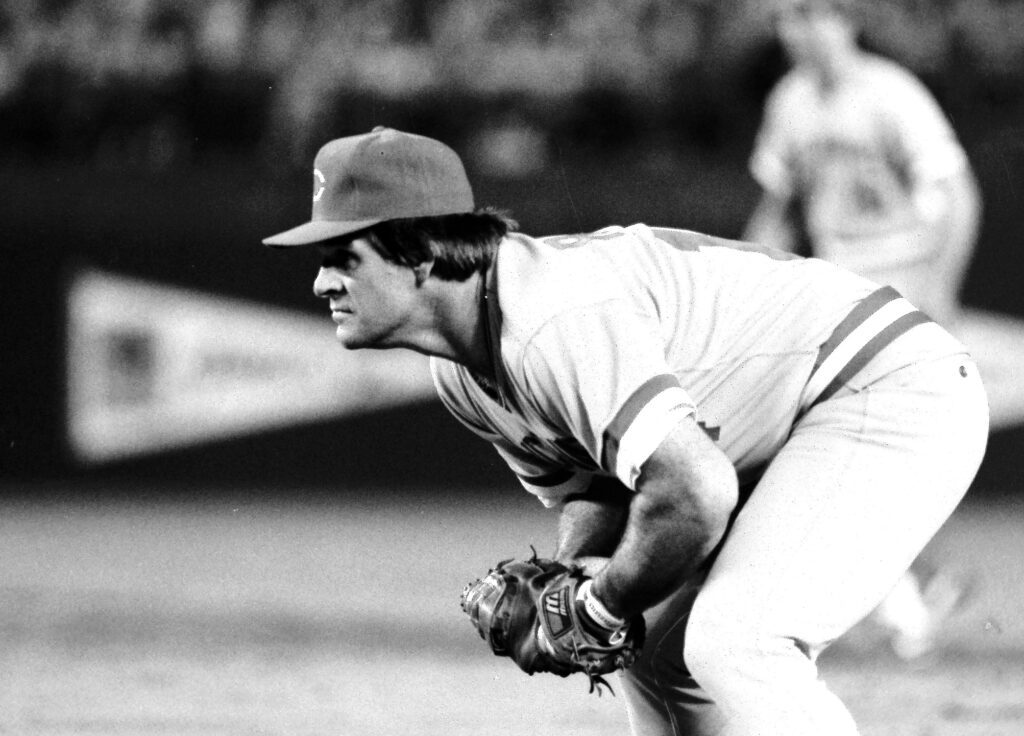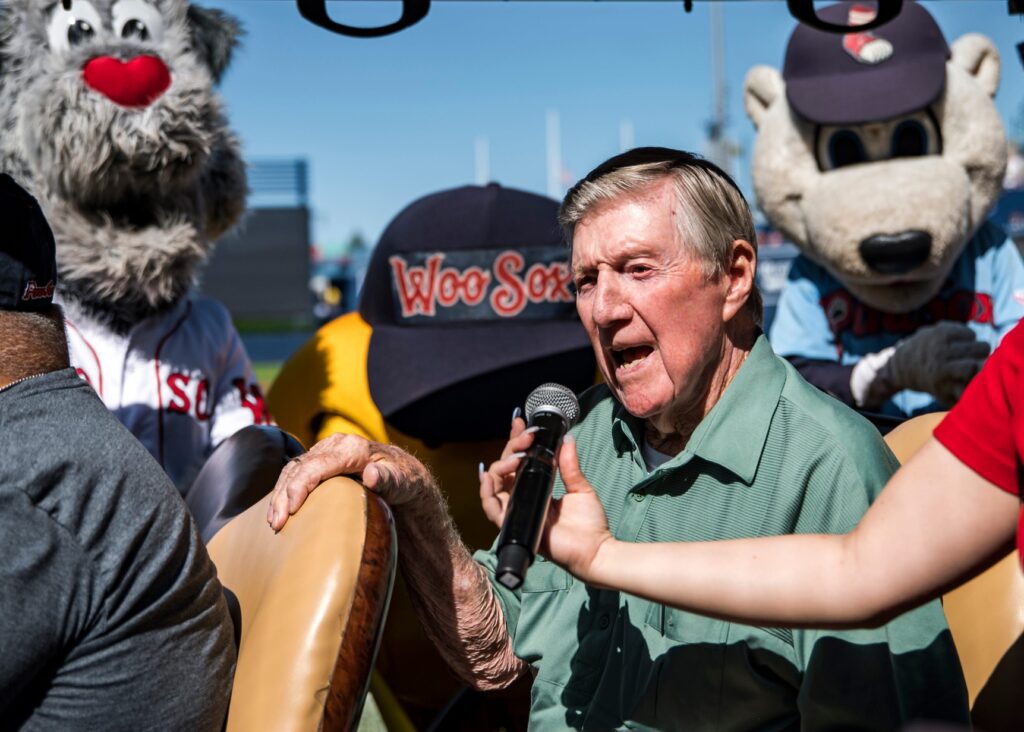The Best Second Basemen of All Time is the first of a series for KnupSports.
Tom has curated a list of the best players at each position in this article. It’s interesting to note that everyone has their own unique perspective on what makes a player truly great, which can be subject to endless debates.
This position wasn’t as difficult as some of the others. So, let’s get to it!
Best 2nd Basemen At a Glance
10 BEST SECOND BASEMEN OF ALL TIME
Let’s dive into the 10 best second basemen of all time one by one.
10. Lou Whitaker
Whitaker spent his entire career with the Detroit Tigers. From 1977 to 1995, he appeared in 2,390 games for the Tigers, third most in franchise history behind Ty Cobb and Al Kaline. He helped the Tigers win the 1984 World Series, was selected as an American League All-Star five consecutive years (1983–1987) and won four Silver Slugger Awards (1983–1985, 1987) and three Gold Glove Awards (1983–1985). The Tigers retired his No. 1 jersey in August 2022. Career WAR was 75.1.
9. Jackie Robinson
Robinson became the first African American to play in Major League Baseball (MLB) in the modern era. Robinson broke the color line when he started at first base for the Brooklyn Dodgers on April 15, 1947. The Dodgers signing Robinson heralded the end of racial segregation in professional baseball that had relegated black players to the Negro leagues since the 1880s. Robinson was inducted into the Baseball Hall of Fame in 1962.
During his 10-year MLB career, Robinson won the inaugural Rookie of the Year Award in 1947, was an All-Star for six consecutive seasons from 1949 through 1954, and won the National League (NL) Most Valuable Player Award in 1949—the first black player so honored. Robinson played in six World Series and contributed to the Dodgers’ 1955 World Series championship.(lack of longevity keeps him from not moving down on my list)
8. Frankie Frisch
He is a member of the National Baseball Hall of Fame and Museum and the St. Louis Cardinals Hall of Fame Museum. He is tied with Yogi Berra for most World Series doubles at 10 and holds the record for the most World Series hits at 58 for a player who never played for the New York Yankees, exceeded only by Berra and Mickey Mantle. batted over .300 in his last six seasons with New York. He was also an expert fielder and a skilled base-runner. In 1921, he led the National League with 48 steals, in 1923 in hits, and in 1924 in runs.
With Frisch adding his fiery competitiveness to the team, the Giants won the World Series in 1921 and 1922, winning the NL pennant the following two seasons as well. On September 10, 1924, Frisch went 6-for-7 in a 22–1 rout of the Boston Braves at the Polo Grounds. 74.7 is his lifetime WAR
7. Pete Rose
He was a switch hitter and is the all-time MLB leader in hits (4,256), games played (3,562), at-bats (14,053), singles (3,215) and outs (10,328). He won three World Series, three batting titles, one Most Valuable Player Award, two Gold Gloves and the Rookie of the Year Award.
He also made 17 All-Star appearances at an unequaled five positions (second baseman, left fielder, right fielder, third baseman and first baseman). Rose won both of his Gold Gloves when he was an outfielder, in 1969 and 1970. He finished with a 78.1 WAR. (He would be higher but second base was only one of five positions he played).

6. Nap Lajoie
He was a lifetime .339 hitter and finished 3252 RBI’s. Triple Crown (1901), 5× AL batting champion (1901–1904, 1910), AL home run leader (1901), 3× RBI leader (1898, 1901, 1904), entered the Cleveland Guardians Hall of Fame and Baseball Hall Fame in 1937. His WAR was 76.9.
5. Rod Carew
He won the 1977 AL Most Valuable Player Award, setting a Twins record with a .388 batting average. Carew appeared in 18 straight All-Star Games and led the AL in hits three times, with his 239 hits in 1977 being the twelfth most in a season at the time. He won seven AL batting titles, the second most AL batting titles in history behind Ty Cobb, and on July 12, 2016, the AL batting title was renamed to the Rod Carew American League batting title.
In 2,469 games over 19 seasons, Carew posted a .328 batting average (3,053-for-9,315) with 1,424 runs, 445 doubles, 112 triples, 92 home runs, 1,015 RBI, 353 stolen bases, 1,018 bases on balls, .393 on-base percentage and .429 slugging percentage. Defensively, he recorded a .985 fielding percentage playing at first and second base. In 14 ALCS games, he hit .220 (11-for-50) with 6 runs, 4 doubles, 1 RBI, 2 stolen bases and 5 walks.
He also had a batting average of .300 or higher in 15 consecutive seasons (1969-1983). Carew recorded 7 five-hit games and 51 four-hit games in his 19-year MLB career. He finished with a 72.3 WAR.
4. Charlie Gehringer
He played for the Detroit Tigers for 19 seasons from 1924 to 1942. He compiled a .320 career batting average with 2,839 hits and 1,427 runs batted in (RBIs). He had seven seasons with more than 200 hits and was the starting second baseman and played every inning of the first six All Star Games.
He won the American League batting title in 1939 with a .371 average and won the American League Most Valuable Player Award. He helped lead the Tigers to three American League pennants (1934, 1935, and 1940) and the 1935 World Series championship.
Gehringer was also one of the best fielding second basemen in history. At the time of his retirement, he ranked first in Major League Baseball (MLB) history with 1,444 double plays turned at second base (now seventh in MLB history). He remains among MLB’s all-time leaders with 7,068 assists at second base (second in MLB history) and 5,369 putouts (sixth in MLB history). He finished with a 76.8 WAR.
3. Joe Morgan
In the New Bill James Historical Baseball Abstract, Bill James named Morgan the best second baseman in baseball history, ahead of #2 Eddie Collins and #3 Rogers Hornsby. He also named Morgan as the “greatest percentages player in baseball history”, due to his strong fielding percentage, stolen base percentage, walk-to-strikeout ratio, and walks per plate appearance.
While his lifetime average was only .271, he hit between .288 and .327 during his peak years with the Reds. Additionally, he drew many walks, resulting in an excellent .392 on-base percentage. He also hit 268 home runs to go with his 449 doubles and 96 triples, excellent power for a middle infielder of his era, and was considered by some the finest base stealer of his generation (689 steals at greater than 80% success rate). Besides his prowess at the plate and on the bases, Morgan was an exceptional infielder, winning the Gold Glove Award in consecutive years from 1973 to 1977.
His short height proved an asset to him, as he had one of baseball’s smallest strike zones. “The umpires gave him everything. If he didn’t swing at the pitch, it was a ball,” recalled Tommy John. His lifetime WAR was 98.8.

2. Eddie Collins
After spending all but 14 games of the 1907 season in the minor leagues,he played in 102 games in 1908 and by 1909 was a full-time player. That season, he registered a .347 batting average and 67 steals. He was also named the A’s starting second baseman in 1909, a position he played for the rest of his career, after seeing time at second, third, shortstop, and the outfield the previous two seasons.
In 1910, Collins stole a career-high 81 bases, the first American League player to steal at least 80 bases in a season, and played on the first of his six World Series championship teams.
Collins ranks 11th in the major leagues for most hits of all time with 3,315, and 7th for most stolen bases of all time with 745. He is one of five players to steal six bases in a game, and the only person to do so twice, with both occurrences happening within eleven days, on September 11 and September 22, 1912, respectively.
He was part of the Athletics’ “$100,000 infield” (and the highest-paid of the quartet) which propelled the team to four American League (AL) pennants and three World Series titles between 1910 and 1914. He earned the league’s Chalmers Award (early Most Valuable Player recognition) in 1914.
He still holds the major league record of 512 career sacrifice bunts, over 100 more than any other player. He was the first major leaguer in modern history to steal 80 bases in a season, and still shares the major league record of six steals in a game, which he accomplished twice in September 1912.
He regularly batted over .320, retiring with a career average of .333. He also holds major league records for career games (2,650), assists (7,630) and total chances (14,591) at second base, and ranks second in putouts (6,526). Collins is one of only 31 players in baseball history to have appeared in major league games in four decades.
His career WAR is 120.1.
1. Rogers Hornsby
Anytime a list is made of the best or greatest, there is usually an argument that the writer is wrong. That could happen but I challenge anyone to make their own list, not just one player. You will see how close some of these came to selected other players for the decade.
Hornsby is regarded as one of the best hitters of all time. He had 2,930 hits and 301 home runs in his career; his career batting average of .358 is third only to Ty Cobb, at .366, and Oscar Charleston, at .364, in MLB history. He also won two Triple Crowns and batted .400 or more three times during his career.
He is the only player to hit 40 home runs and bat .400 in the same year (1922). His batting average for the 1924 season was .424, a mark that no player has matched since. He was elected to the National Baseball Hall of Fame in 1942 and the St. Louis Cardinals Hall of Fame in 2014. Hornsby’s lifetime WAR finished at 129.1.
Outside: Ryne Sandberg, Chase Utley, Roberto Alomar
That’s a glance at our 10 best second basemen of all time. Now lets jump into the best second basemen by decade.
BEST SECOND BASEMAN BY DECADES
1870’s Best Second Baseman – Ross Barnes
From 1868 to 1870, Ross starred for the Rockford Forest Citys, along with Albert Spalding, attaining professional status in the second year. When the National Association was formed in 1871, Harry Wright signed both men to his new team in Boston. Barnes’s major league career thus started when he was 21. He split time between second base and shortstop for the Boston Red Stockings of the new National Association. Barnes led the league with 66 runs scored and 91 total bases, finishing second in batting average at .401.
In 1872, he led the Association with a .432 batting average, a .585 slugging percentage, 99 base hits, 134 total bases, and 28 doubles. The Red Stockings began a four-year dominance of the Association, with Barnes a key player each year. Barnes again led the Association in 1873, hitting .425, as well as leading in on-base percentage (.456), slugging percentage (.584), base hits (137), runs scored (125), total bases (188), doubles (29), bases on balls (28), and stolen bases (13). His .340 BA in 1874 was good enough for eighth in the league, while his .364 was good for second in 1875, while leading again in runs scored (115), base hits (143) and on-base percentage (.375).
1880’s Best Second Baseman – Hardy Richardson
Abram Harding “Hardy” Richardson (April 21, 1855 – January 14, 1931), also known as “Hardie” and “Old True Blue” was an American professional baseball player whose career spanned from 1875 to 1892 with a brief minor league comeback in 1898. He played 14 seasons in Major League Baseball, playing at every position, including 585 games at second base, 544 games in the outfield, and 178 games at third base. Richardson played for six major league teams, with his longest stretches having been for the Buffalo Bisons (1879–1885), Detroit Wolverines (1886–1888) and Boston Reds (1890–91).
Richardson appeared in 1,334 major league games, compiled a .299 batting average and .437 slugging percentage, and totaled 1,127 runs scored, 1,694 hits, 305 doubles, 126 triples, 73 home runs, 828 RBIs, and 377 bases on balls. From 1881 to 1888, he was part of the “Big Four”, a group of renowned batters (the others being Dan Brouthers, Jack Rowe, and Deacon White) who played together in Buffalo and Detroit and led Detroit to the National League pennant and 1887 World Series championship.
1890’s Best Second Baseman – Bid McPhee
Over 18 years, McPhee batted .272, hit 53 home runs, hit 189 triples, scored 1,684 runs, had 1,072 runs batted in, and stole 568 bases (this number however is noted by the fact that statistics for McPhee’s first four seasons did not include stolen bases, and from 1886 until 1898, the American Association counted stolen bases if a runner happened to go from first base to third base on a single or advanced a base on an out).[4] He had ten 100-plus seasons in runs scored and regularly led the league in many defensive categories despite playing without a glove for the first 14 years of his career. Without the benefit of the padding provided by fielding gloves, McPhee toughened his hands by soaking them in salt water.
1900’s Best Second Baseman – Nap Lajoie
Nap Lajoie made his major league debut on August 12, 1896 for the Philadelphia Phillies and played his final game on August 26, 1916, also with the Phillies.In his career, he batted .339 with 3,251 hira along with 83 home runs and 1,599 runs batted in. He won the triple crown 1901 and was the league’s RBI leader for three seasons. He was selected to the Baseball Hall of Fame in 1937.
1910’s Best Second Baseman – Eddie Collins
He made his debut on September 17, 1906 and played his final game onAugust 2, 1930 all with the Philadelphia Phillies. He played for the St. Louis Cardinals (1915–1926, 1933), New York Giants (1927), Boston Braves (1928), Chicago Cubs (1929–1932), and St. Louis Browns (1933–1937). He was named the National League (NL)’s Most Valuable Player (MVP) twice, and was a member of one World Series championship team
Collins also was part of 6 World Series championship teams along with being ASL MVP in 1914. 4 times he was the AL stolen base leader and in 1939. He was elected to the Baseball Hall of Fame.
1920’s Best Second Baseman – Rogers Hornsby
In his career, he had 2930 hits with 301 home runs and batted .358 in his lifetime. He won two Triple Crowns and also was the only player to smack 40 hoe runs and bat over .400 in a season. In 1924, he batted .424 for the season. That has never been matched. He was part of the 1926 World Champion St. Louis Cardinals, He was betting champion seven time in the National League, He led the league in home runs twice and was the RBI l;eader for four seasons. In 1942, he was named to the Baseball Hall of Fame.
1930’s Best Second Baseman – Rogers Hornsby
In his career, he had 2930 hits with 301 home runs and batted .358 in his lifetime. He won two Triple Crowns and also was the only player to smack 40 hoe runs and bat over .400 in a season. In 1924, he batted .424 for the season. That has never been matched. He was part of the 1926 World Champion St. Louis Cardinals, He was betting champion seven time in the National League, He led the league in home runs twice and was the RBI l;eader for four seasons. In 1942, he was named to the Baseball Hall of Fame.
1940’s Best Second Baseman – Joe Gordon
Gordon was the outstanding player at his position during the 1940s, winning the 1942 American League MVP Award and being named to The Sporting News Major League All-Star Team in nine of his eleven seasons. Known for his acrobatic defense, he led the AL in assists four times and in double plays three times. He was the first AL second baseman to hit 20 home runs in a season, doing so seven times, is second all-time for career home runs at second base (246) behind Robinson Canó, and he held the single-season record until 2001. He played a major role on the 1948 champion Indians, leading the team in home runs and runs batted in. He ranked sixth in major league history in double plays (1,160) upon retiring, and was sixth in AL history in games (1,519), putouts (3,600), assists (4,706) and total chances (8,566) and seventh in fielding percentage (.970).
1950’s Best Second Baseman – Nellie Fox
Fox was an American League (AL) All-Star for twelve seasons,[a] an AL Most Valuable Player (MVP) for one season, and an AL Gold Glove winner for three seasons. He had a .288 major-league career batting average with 2663 hits, 35 home runs, and 790 runs batted in. He hit .300 or more six times, and led the AL in singles eight times (seven consecutive seasons) and in fielding average six times as a second baseman. His career fielding percentage was .984. In 1959, when the “Go Go” Chicago White Sox won the American League pennant, he hit .306 with 149 singles and 70 RBI. He coached for the Houston Astros and Texas Rangers after his playing career. He was inducted into the National Baseball Hall of Fame in 1997.
1960’s Best Second Baseman – Pete Rose
He played for many seasons for the Cincinnati Reds. His career batting average was .303 with 4,256 hits,(most of any player ever) and he amassed 160 home runs
His career highlights and awards include:
- 17× All-Star (1965, 1967–1971, 1973–1982, 1985)
- 3× World Series champion (1975, 1976, 1980)
- NL MVP (1973)
- World Series MVP (1975)
- NL Rookie of the Year (1963)
- 2× Gold Glove Award (1969, 1970)
- Silver Slugger Award (1981)
- Roberto Clemente Award (1976)
- 3× NL batting champion (1968, 1969, 1973)
- Cincinnati Reds No. 14 retired
- Cincinnati Reds Hall of Fame
- Major League Baseball All-Century Team
- MLB records
- 4,256 career hits
- 3,215 career singles
- 3,562 career games played
- 14,053 career at-bats
- 15,890 career plate appearances
Currently, Rose has been banned from baseball for his alleged betting on baseball.
1970’s Best Second Baseman – Joe Morgan
He took over second base for the Reds from Pete Rose. In his career, he had 2517 hits with 268 home runs and batted .271. Morgan also drove in 1133 runs in his career.
His honors and statistics include:
- 889SB
- 10x AS
- 2xWS
- 5xGG
- Silver Slugger 1982
- HoF 1990
1980’s Best Second Baseman – Lou Whitaker
From 1977 to 1995, he appeared in 2,390 games for the Tigers, third most in franchise history behind Ty Cobb and Al Kaline. He helped the Tigers win the 1984 World Series, was selected as an American League All-Star five consecutive years (1983–1987) and won four Silver Slugger Awards (1983–1985, 1987) and three Gold Glove Awards (1983–1985). The Tigers retired his No. 1 jersey in August 2022.
1990’s Best Second Baseman – Craig Biggio
A seven-time National League (NL) All-Star often regarded as the greatest all-around player in Astros history, he is the only player ever to be named an All-Star and to be awarded Silver Slugger Award at both catcher and second base. With longtime teammates Jeff Bagwell and Lance Berkman, he formed the core of the “Killer B’s” who led Houston to six playoff appearances from 1997 to 2005, culminating in the franchise’s first World Series appearance in 2005. At the end of his career, he ranked sixth in NL history in games played (2,850), fifth in at bats (10,876), 21st in hits (3,060), and seventh in runs scored (1,844). His 668 career doubles ranked sixth in major league history, and are the second-most ever by a right-handed hitter; his 56 doubles in 1999 were the most in the major leagues in 63 years.
2000’s Best Second Baseman – Chase Utley
Played in Major League Baseball (MLB) for 16 seasons, primarily for the Philadelphia Phillies. He also played for the Los Angeles Dodgers. He is a six-time All-Star, won a World Series with the Phillies in 2008, and was chosen as the second baseman on the Sports Illustrated All-Decade Team for the 2000s. He batted left-handed and threw right-handed.

2010’s Best Second Baseman – Robinson Cano
He spent the majority of his career with the New York Yankees. In his career, he batted .301 with 2639 hits, 335 home runs and drove in 1306 runs. His career awards include:
- 8× All-Star (2006, 2010–2014, 2016, 2017)
- World Series champion (2009)
- 5× Silver Slugger Award (2006, 2010–2013)
- 2× Gold Glove Award (2010, 2012)
- World Baseball Classic champion (2013)
- World Baseball Classic MVP (2013)
- All-World Baseball Classic Team (2013)
Check out our other top MLB positions list:














